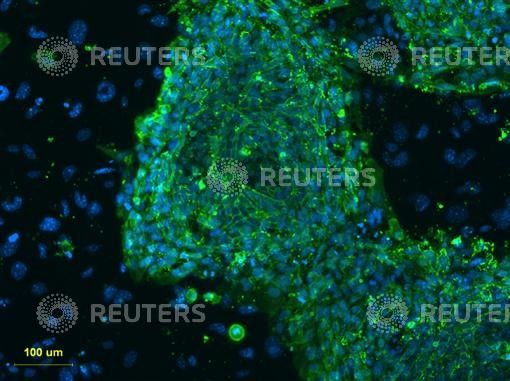Scientists Suggest Anti-Aging Stem Cell Therapy for Chronic Diseases

Scientists at the Buck Institute for Research on Aging and the Georgia Institute of Technology have shown they can turn back the biological clock in human adult stem cells, which helps regenerate old or damaged tissues.
The findings could lead to new medical treatments that may devise techniques to cure ailments that occur due to tissue damage as a result of people aging.
The September edition of the journal Cell Cycle published the study which notes that understanding the molecules and processes that enable human adult stem cells to initiate self-renewal and to divide, proliferate and then differentiate in order to rejuvenate damaged tissue might be the key to regenerative medicine and an eventual cure for many age-related diseases.
According to modern day stem cell hypothesis of aging, living organisms are as old as its tissue specific or adult stem cells.
Scientists believe that if they discover a way to keep these adult stem cells young, they could possibly use these cells to repair damaged heart tissue after a heart attack, heal wounds, correct metabolic syndromes, produce insulin for patients with type 1 diabetes, cure arthritis and osteoporosis and regenerate bone.
Normally, adult stem cells undergo age-related damage. And when this happens, the body is unable to replace damaged tissue, leading to a diseases and conditions.
Researchers therefore attempted to devise methods that could keep these adult stem cells young, which could possibly be used to repair damaged tissue after injury or major illness.
We demonstrated that we were able to reverse the process of aging for human adult stem cells by intervening with the activity of non-protein coding RNAs originated from genomic regions once dismissed as non-functional 'genomic junk', said Victoria Lunyak, associate professor at the Buck Institute for Research on Aging.
The scientist's findings were based on the fact that body cells experience a shortening of the caps found at the ends of chromosomes, known as telomeres. But adult stem cells are known to maintain their telomeres. Much of the damage in aging is widely thought to be a result of losing telomeres.
As a cell ages, the telomeres get shorter, similar to a fuse burning down. But adult stem cells tend to maintain these fuses. The team therefore hypothesized that DNA damage in the genome of adult stem cells would look very different from age-related damage occurring in regular body cells. Their belief was that these repair stem cells could be aging by a different mechanism.
We found the majority of DNA damage and associated chromatin changes that occurred with adult stem cell aging were due to parts of the genome known as retrotransposons, said King Jordan, associate professor in the School of Biology at Georgia Tech.
Retroransposons were previously thought to be non-functional and were even labelled as 'junk DNA', but accumulating evidence indicates these elements play an important role in genome regulation, he added.
They found that as we and our adult stem cells age, 65 percent of the DNA damage in self-renewing adult stem cells occurred within small sections of DNA called transposable elements or retrotransposons, co-author King Jordan said.
While the young adult stem cells were able to suppress transcriptional activity of these genomic elements and deal with the damage to the DNA, older adult stem cells were not able to scavenge this transcription.
The new discovery suggests that this event is harmful for the regenerative ability of stem cells and triggers a process known as cellular senescence.
By suppressing the accumulation of toxic transcripts from retrotransposons, we were able to reverse the process of human adult stem cell aging in culture, said Lunyak.
Furthermore, by rewinding the cellular clock in this way, we were not only able to rejuvenate 'aged' human stem cells, but to our surprise we were able to reset them to an earlier developmental stage, by up-regulating the pluripotency factors or the proteins that are critically involved in the self-renewal of undifferentiated embryonic stem cells. she said.
The team plans to analyze and validate the extent to which rejuvenated stem cells may be useful in clinical tissue regenerative applications.
© Copyright IBTimes 2024. All rights reserved.





















